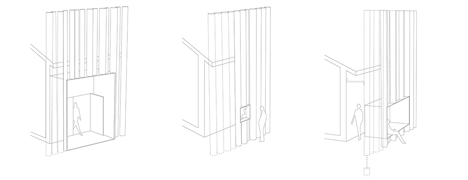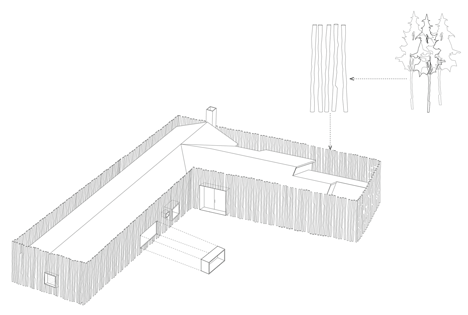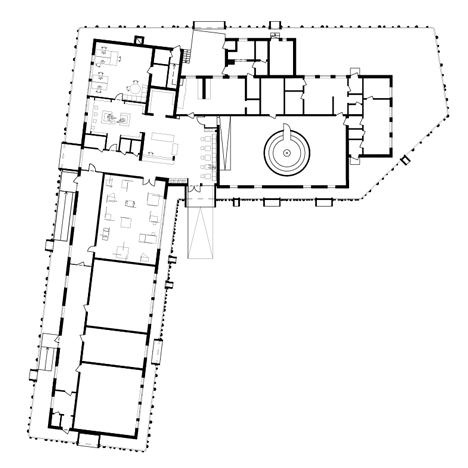Log-clad museum by Bornstein Lyckefors honours the legacy of Finnish slash-and-burn farmers
Bornstein Lyckefors Architects pays tribute to an agricultural technique known as slash-and-burn with this forest museum near Torsby, Sweden, clad with wooden logs (+ slideshow).
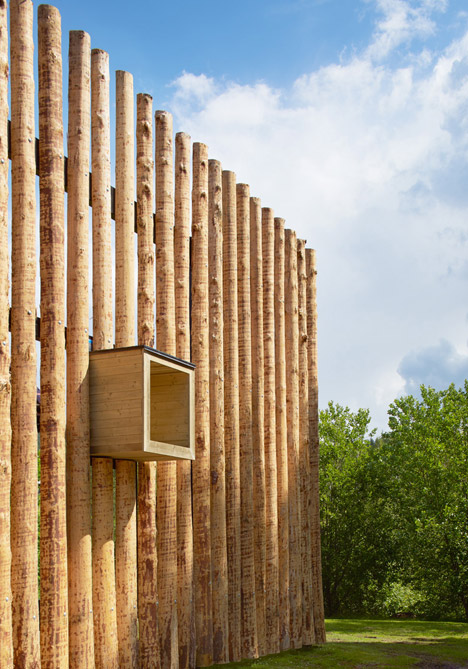
Slash-and-burn is a form of self-sufficiency farming that involves the cutting or burning of woodlands to create fields for growing food.
As the Torsby Finnskog Center is dedicated to the history of the Nordic forests, Bornstein Lyckefors Architects wanted the design to make reference to this practice, which was brought to Sweden in the 1600s by Finnish migrants known as the Forest Finns.
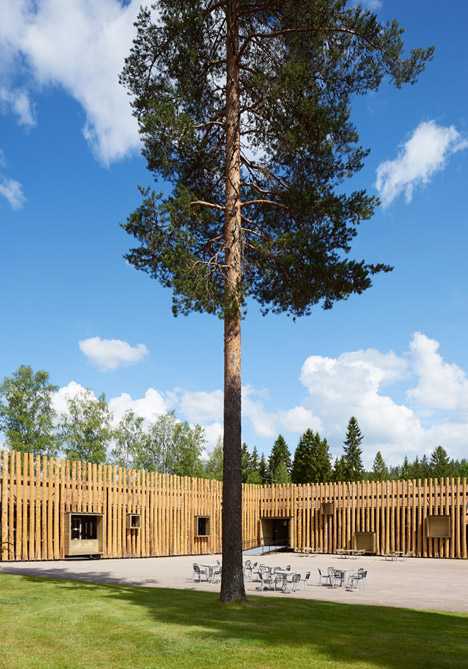
"The Forest Finns lived from burning the forest and using the leftover pieces of land for agriculture," architect Andreas Lyckefors told Dezeen. "The museum is exhibiting their way of life and we wanted to let the architecture communicate the same values."
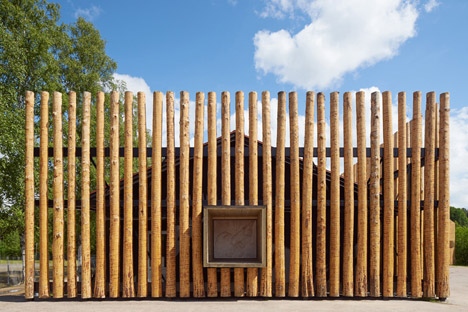
A total of 300 logs were sourced from the surrounding forest to create the museum's wooden facade. Each log was stripped of its bark before being cleaved in half and mounted onto a rack.
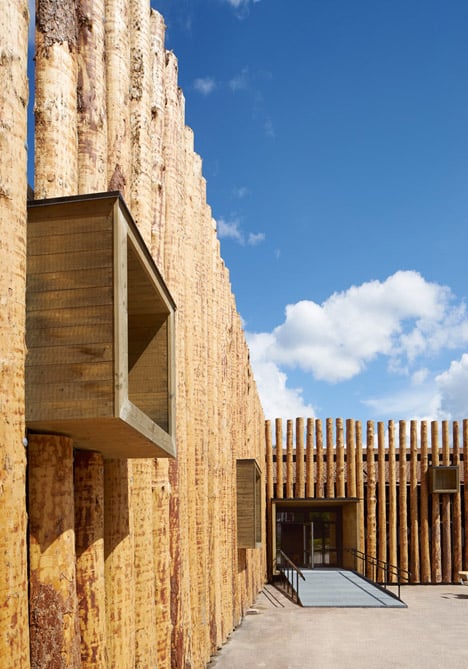
Rather than painting or treating the wooden lengths, the team chose to leave them unfinished so that they will show their age.
"The greatest challenge was to deal with the weight of the material," explained the architect. "The screen of timber had to be reinforced by a steel structure."
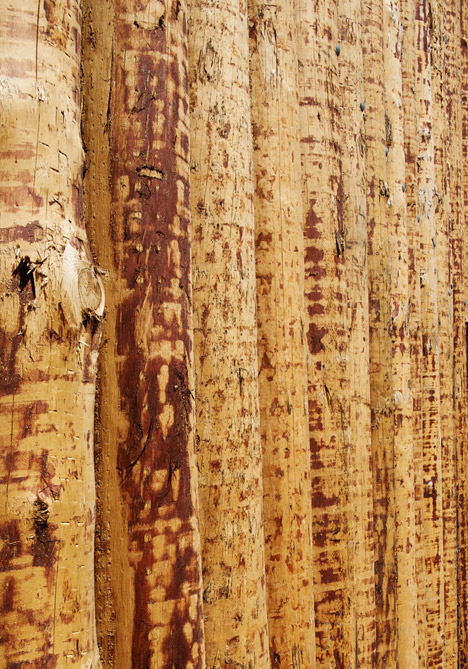
Behind the facade, the single-storey building comprises an old disused primary schoolhouse that has been renovated inside and out.
The exterior was painted black to "appear only as a shadow behind the screen of timber".
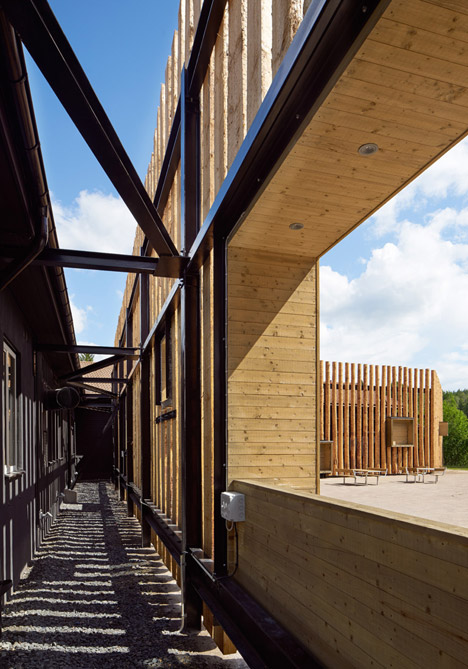
Wooden boxes were installed to extend the existing windows and doors out beyond the new outer facade. One forms the main entrance, while another provides an outdoor seating area.
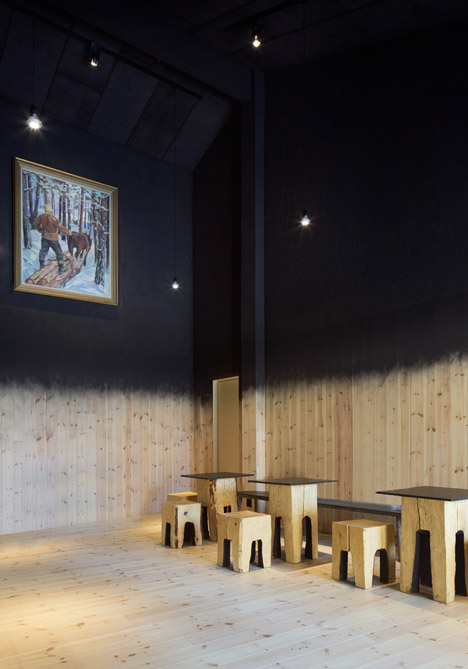
Inside, walls are lined in wood and painted with a black gradient. This was intended as another reference to the cultural heritage of the Forest Finns.
"The Finns used to heat their houses by letting smoke pour into the buildings under the roof," said Lyckefors. "The ceiling would be filled to a level at eye-height, leaving black traces. We wanted to recreate that."
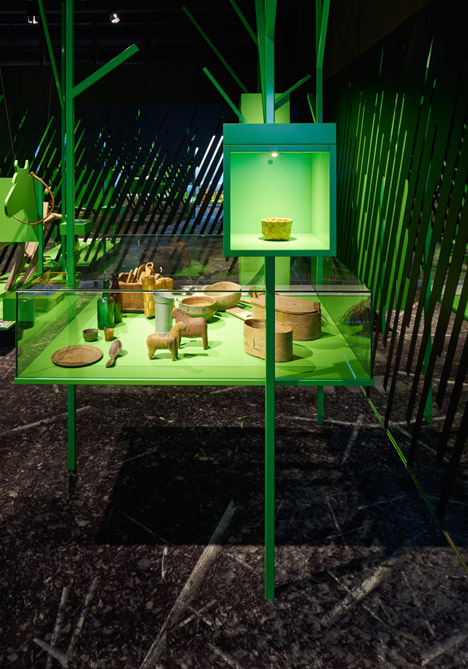
The internal layout was left largely unchanged, as it turned out that the existing classrooms were about the size required for exhibition spaces.
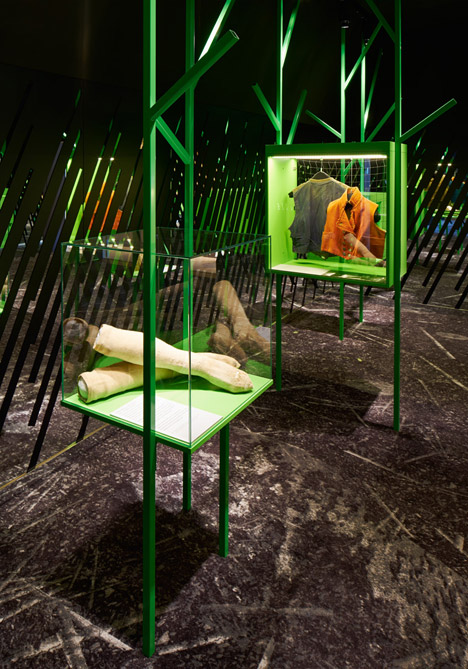
Four galleries form one wing of the L-shaped plan, while the other side contains a large multi-purpose room and a cafe. The entrance lobby is sandwiched in between.
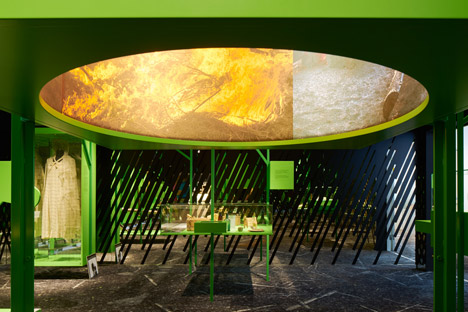
The building opens with an exhibition showing the history, traditions and crafts of the Forest Finns, which was also designed by Bornstein Lyckefors Architects. The floor is covered with a printed carpet depicting the burned ground, while the green exhibition stands were modelled on young trees.
Photography is by Åke E:son Lindman.
